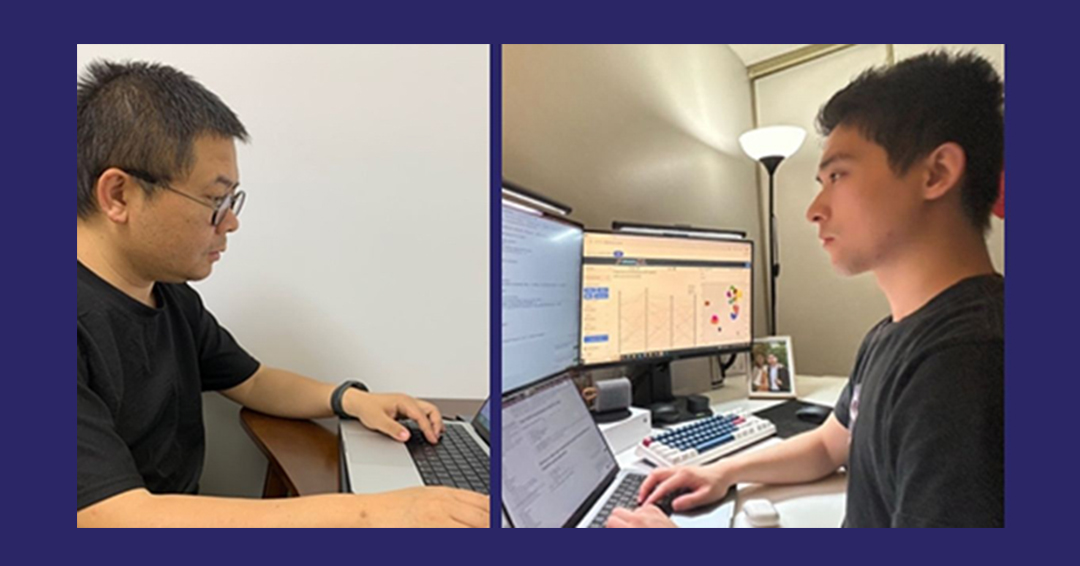
Dr. Jun Ding’s UNAGI platform — and a suite of AI-powered tools — advance in-silico therapeutics, decode cellular dynamics, and streamline drug discovery across diseases.
Understanding how cells change during disease is key to advancing diagnostics and treatment. Jun Ding, PhD, a junior scientist in the Translational Research in Respiratory Diseases Program at The Institute and recipient of the prestigious FRQS award in Artificial Intelligence and Health, is taking a novel approach to this challenge. Working with an international network of collaborators, Dr. Ding and his team are using AI tools to decode how diseases progress — with the goal of identifying therapies more efficiently and bringing them to patients sooner.
Their latest work centres on a platform called UNAGI—one of the first deep generative AI tools designed to decode cellular dynamics and model disease entirely in a virtual environment. By simulating how individual cells change over time and how they might respond to potential treatments, the team is pioneering a new category of “disease-in-silico therapeutics”. This approach accelerates the discovery of drug candidates while reducing the need for time-consuming lab experiments. The study, led by first author Yumin Zheng and published in Nature Biomedical Engineering, demonstrates how UNAGI can help identify new treatments for conditions such as idiopathic pulmonary fibrosis (IPF) and COVID-19 — highlighting its innovation and translational impact in computational medicine.
In this study, UNAGI was used to identify candidate therapeutics for IPF and COVID-19. Among several leads, the platform identified Nifedipine—a widely used blood pressure medication—as a potential treatment for lung fibrosis. This prediction was validated through experiments on precision-cut human lung tissue slices, collected during transplant surgeries at KU Leuven and selected to represent different disease stages. The Yale School of Medicine team, led by co-corresponding author Naftali Kaminski, MD, not only conducted the functional validation but also generated a comprehensive single-cell gene expression atlas from these tissues, enabling high-resolution insight into fibrotic pathways. Their results showed that Nifedipine could reduce fibrotic signatures in lung tissue, supporting its therapeutic potential. The study exemplifies how integrating AI-driven discovery with multi-institutional experimental validation can accelerate the translation of computational predictions into real-world clinical insights.
UNAGI is built on unsupervised deep learning — a form of AI that can uncover patterns in large datasets without requiring pre-labelled examples. It analyzes single-cell transcriptomic data, which tracks how genes are expressed in individual cells over time, to learn how healthy cells shift into diseased states. UNAGI can then perform in-silico perturbations — virtual interventions that simulate how drug candidates might alter those trajectories and restore healthier cellular behaviour.
Beyond idiopathic pulmonary fibrosis and COVID-19, the platform has also been applied to other diseases, including Duchenne muscular dystrophy, underscoring its broad utility in AI-driven drug discovery. By combining deep learning with high-resolution single-cell omics, UNAGI offers a scalable, mechanistic and cost-effective way to uncover disease mechanisms and prioritize therapeutic candidates across a wide range of conditions.
The significance of this work was further recognized in Nature‘s November 2024 Technology Feature, “Computational technologies of the Human Cell Atlas,” which profiled seven leading tools worldwide — three of them developed by Dr. Ding and his team. These tools are helping to overcome the technical and financial barriers that have historically limited progress in single-cell research.
This research is supported by the Meakins-Christie Laboratories through the Research Chair in Respiratory Research held by Dr. Ding, as well as funding from Canadian Institutes of Health Research (CIHR), Natural Sciences and Engineering Research Council of Canada (NSERC), and the Fonds de recherche du Quebec (FRQ). This research is also supported in part by Three Lakes Foundation. The team also acknowledges the technical support provided by The Institute’s Information Technology Services team and the Digital Research Alliance of Canada for support with computing resources.
